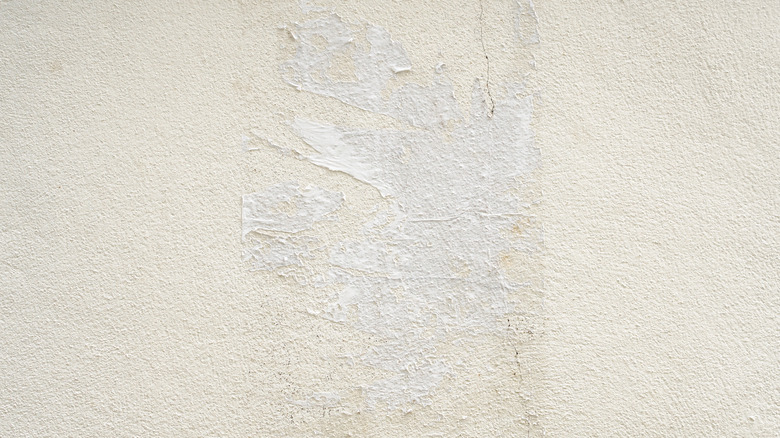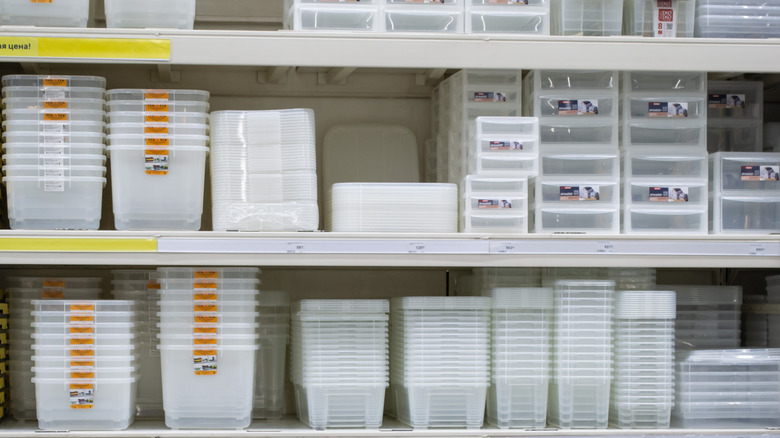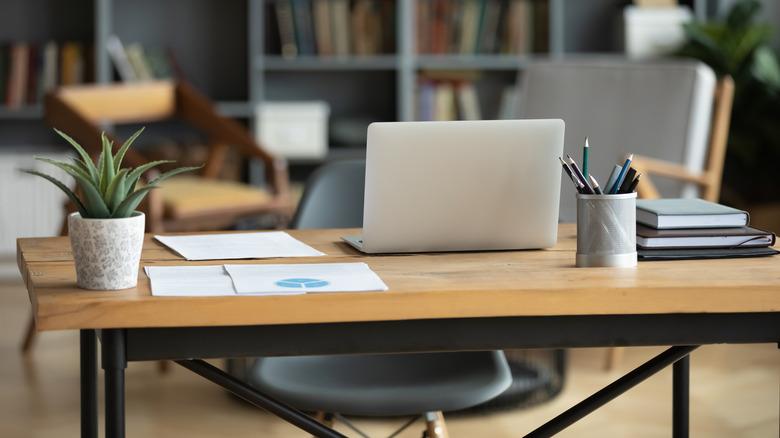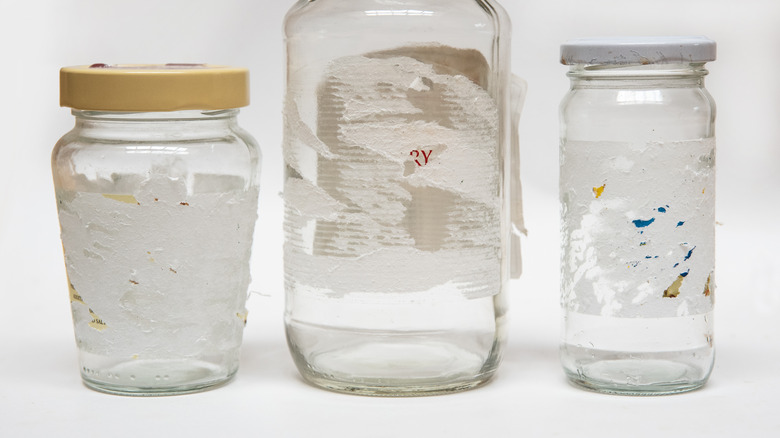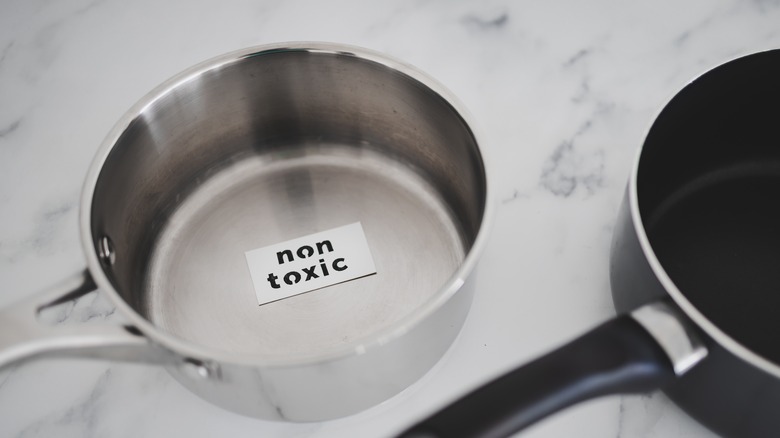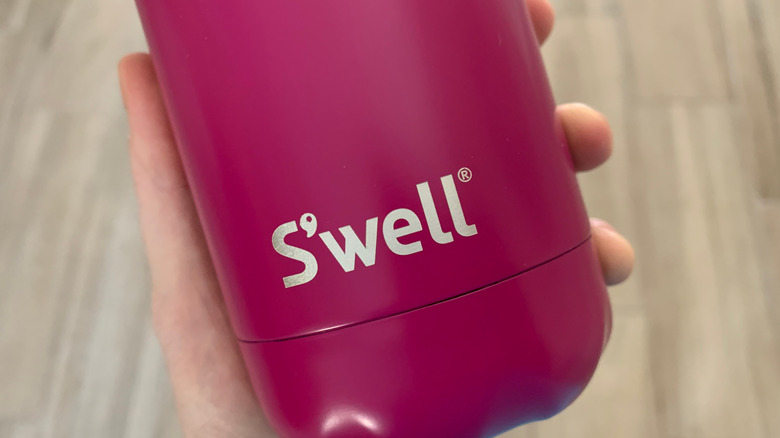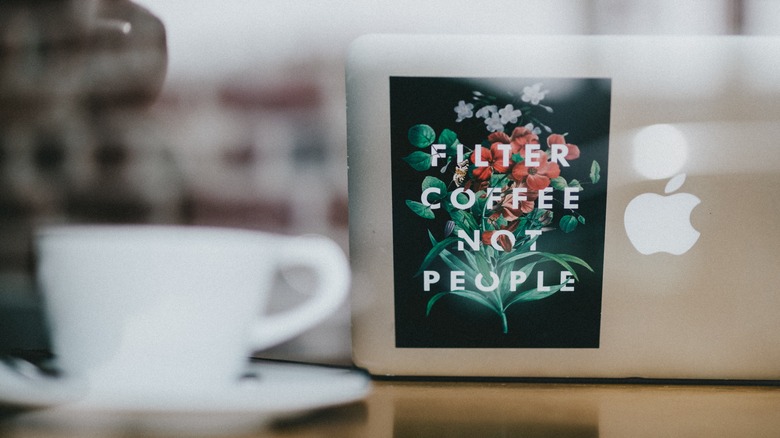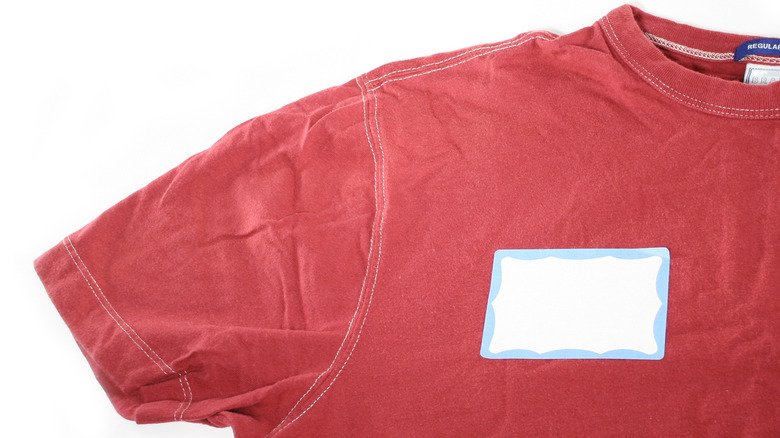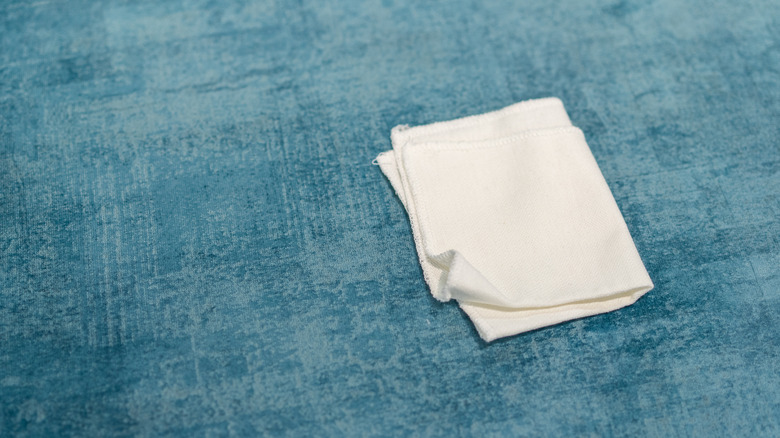How To Get Rid Of Sticker Residue On Any Surface
Stickers seem to pop up everywhere lately, whether they're on the products you've just bought or your kids brought a book of them home from an event. Maybe you've jumped on the home organization bandwagon and have stocked up on containers that are covered in labels. Or maybe your kid decided to decorate the fabric couch with their collection. Or, maybe you put those free company stickers on your laptop and now want to sell it.
Whatever the situation, there are many times in our lives that we need to not only remove stickers, but also the residue that they inevitably leave behind. One of the first methods we usually try is by using our hands to get rid of it. To that end, Reader's Digest suggests running the sticky spot under hot water first before attempting to remove the residue. That doesn't work for everything, however, with the prime example being electronics.
Ahead you will find simple methods for removing sticker residue on a variety of surfaces so you can get things clean without ruining your mani.
Plastic
One of the most common surfaces to come with price tag stickers or brand labels appears to be plastic. You know this pain if you've recently purchased the trendy clear containers for your pantry or refrigerator organizing project. Fortunately, there are multiple ways to easily remove the residue from them once you've peeled off the initial sticker.
These ways also include items you most likely already have in your home. According to Better Homes & Gardens, use a pat of peanut butter on the residue and wipe with a cloth once it's soft enough. You can also reach for rubbing alcohol or even vodka; pour a bit on a paper towel and then dab with or let it sit for a few minutes on the residue. Alcohol is known to be harmless yet powerful when used on most surfaces.
If you would like to make it even easier on yourself, turn a hairdryer on to the residue before attempting either of the aforementioned methods. The heat will help soften it further.
Wood
If you've assembled any wood furniture recently, you may have noticed that a sticker accompanies almost every part. It's excellent for instruction purposes and can stay put as they're only seen on the back or bottom of the piece. But you may need to remove some visible (even if only semi-visible) stickers which can, in turn, leave some unwanted residue.
For finished wood, Hunker suggests mixing 1/2 cup of water with 2 teaspoons of white vinegar. From there, simply take a cloth with a bit of the mixture and rub it over the residue until it disappears. This method can also work after peeling labels off of wooden items such as the bottom of the new salad bowl you just picked up.
If the wood is unfinished, however, Hunker recommends soaking the residue with a paper towel dipped in mineral spirits for a few minutes. Once you wipe it away with water, shake some baking soda on the spot and wipe again to get it completely clean.
Glass
If you've ever wanted to repurpose a glass jar for leftovers or even a beer or wine bottle for a craft project, you know how difficult it can be to remove the label. And even after you manage to get it off, you're still stuck with lots of sticky residue to eliminate before the glass is ready to use.
Fortunately, this can be solved with an item mentioned earlier. According to The Spruce, you can soak either a cotton ball if working with a small area or a paper towel if it's a larger one in rubbing alcohol. They also suggest vodka or gin as a substitute if you're running low on the stuff in your medicine cabinet.
After about ten minutes of soaking the spot, take a plastic scraper carefully to the glass to remove the residue. If it's giving you a hard time, repeat the whole process and, when it's gone, simply wipe the area with a microfiber cloth.
Metal
You're most likely eager to start using that new pot or pan you just picked up at the store for your next meal. But before you start cooking, you'll want to clean it thoroughly and that includes getting any price stickers or labels off of it.
The Spruce suggests two main methods of removing sticker residue from metal, with the first one using an item you may have pulled out for your recipe already. Vegetable, oil, corn, or safflower oil can all work to dissolve the sticker and its residue. Soak the spot with your choice of oil for a few hours, then hit it with a hairdryer set on warm to soften it some more. Mix a few drops of dishwashing liquid with water and use it to clean the entire area.
The second method requires a bit more grease, as in WD-40. Spray the product onto a cloth and then wipe the residue from the outside in. Feel free to use the hairdryer tactic to loosen the goo further. Once it's gone, polish it with a dry cloth.
Painted metal
It may have been a good idea at the time to place stickers on your car or brand new aluminum water bottle, but what happens when you want to take it off? Or maybe you just scored a really neat looking secondhand metal chair and it has residue on it from the last owner. How do you get the sticky stuff off without destroying the paint?
If the metal is painted, This Old House recommends using a non intrusive method to remove the residue. After warming up a bit of coconut oil, mix it with an equal amount of baking soda. You'll want to then dip a clean cloth into the mixture and rub the residue right off. The baking soda is destroying the sticky stuff while the coconut oil is protecting the paint. If you're all out of coconut oil, try mixing the baking soda with any of the oils mentioned in the last tip, such as vegetable or olive oil.
Electronics
Similar to slapping stickers on your water bottle, you may have also done so to your laptop. Whether you just want to remove them or you're returning it to a previous employer or even selling it, the residue has to come off along with the stickers themselves.
The first step before trying to get residue off of any electronics is to make sure it's unplugged for safety reasons. Hunker suggests running a wet wipe over the area you need to clean so long as it's not touching any electrical parts or wires. From there, dampen a cloth and add a bit of 90% isopropyl alcohol to further break down the sticky spots. If any residue happened to seep into a crevice such as the keyboard, follow this exact method but use a cotton round instead of a cloth in order to thoroughly clean the gunk off of the whole item.
Clothing
If you just came back from voting or a networking event, the chances are that you received either a sticker or a name tag and have now peeled it off of your shirt. Unfortunately, now you're left with some residue in a conspicuous spot.
Real Simple has some ideas for removing it depending on the material. For most synthetically made clothing, the trick is to make sure the residue is hardened before cleaning it. If you just peeled the sticker off, a good method to harden it is by tossing the garment in the freezer for an hour or so. You may be able to physically remove the residue now but, if not, mix a few drops of dishwashing soap in water and use a cloth soaked in it to rub it off.
If the article of clothing you need to clean is made using natural fibers, nail polish remover can come in handy. The first step is to place a towel behind the spot to protect the rest of the garment, then dab a bit of acetone polish remover until the stickiness is gone.
Fabric upholstery
If your kids got creative and made the couch or ottoman their sticker art project while you were in the kitchen preparing lunch, there's no need to worry. That's especially since what you need to remove the residue is most likely already in the kitchen.
According to The Spruce, there is an easy cleaning method using white vinegar and a little bit of heat. Simply warm up some vinegar on the stove or in the microwave, dip a clean cloth into it, and then lightly blot the affected spots. It's important to avoid soaking the fabric as it may be difficult to dry and can lead to a potential mildew problem. Continue to dab the cloth, working first on the outside of the residue stain to the inside, until it is removed. If the upholstery is antique or you're unsure of the material, consider calling in an expert in furniture cleaning.
